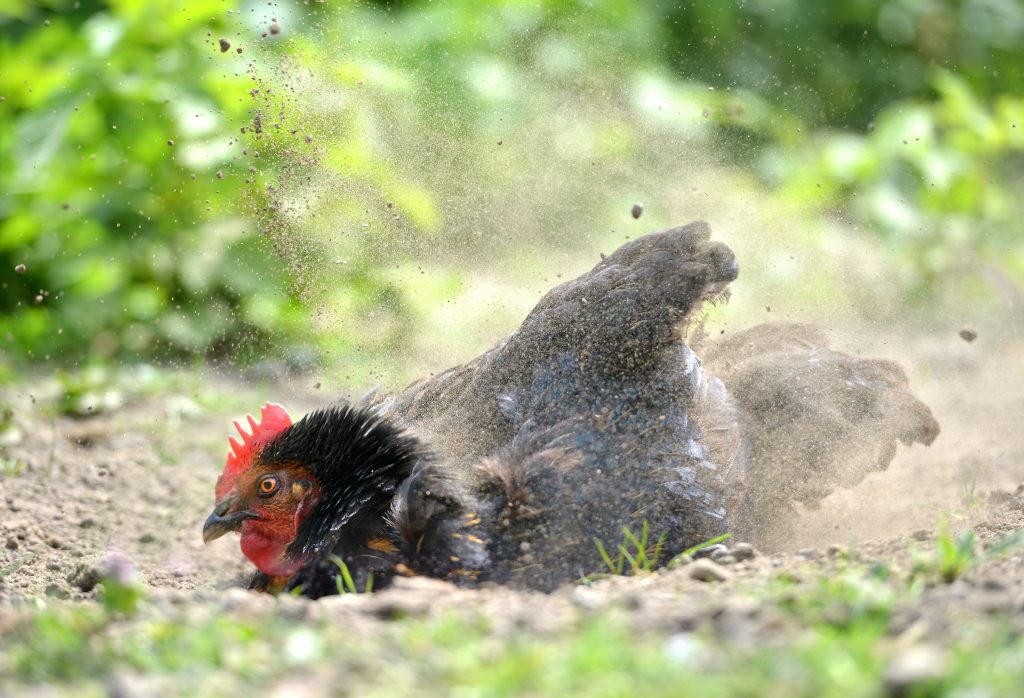If you’ve owned chickens, you’ve probably seen them giving themselves a dust bath. Chickens will lay in a shallow area of scratched up dirt and kick it all over themselves. If you haven’t seen it before, it can look a little frightening like your chicken is having a seizure. Don’t worry though, it’s totally normal and necessary for your chicken’s health!
Chickens have evolved over time and have learned to take care of themselves when it comes to cleanliness and hygiene. While we think of bathing as a process requiring soap and water, chickens are much the opposite. They would much rather cover themselves with a layer of fine dust than use water. There’s some reasoning behind this though.
Chickens can become plagued with harmful external parasites. Fleas, lice and several kinds of mites can quickly irritate or harm a chicken. These parasites all chew on the skin to cause a small amount of bleeding. These parasites then feast on the exposed blood. External parasites reproduce rapidly, some in as little as a few days. For example, poultry mites have a life cycle of about 5-7 days. In this short amount of time, they can easily lay over 100,000 eggs. Rapid reproduction of parasites can lead to skin wounds, feather loss and even death due to anemia in extreme cases.

Dust can help to alleviate external parasites. When chickens throw dust on themselves, the dust reaches through the feathers and down to the skin. The dust creates a protective layer over the skin that helps prevent the parasites from biting. It can also stop up the parasites’ respiratory system. Both methods will kill the parasites. Chickens also use dust baths to soak up excess moisture or oil from preening glands. Excess moisture and oil under the feathers can lead to skin conditions if untreated. Thankfully, chickens know exactly how to prevent and treat this with dust baths!
Providing dust baths for chickens
If your chickens are free-ranged or let out daily, they will take care of creating a dust bath area themselves. They will often find a somewhat secluded, private area like under a shed or bush. Don’t be surprised though if they make a dust bath area in the wide open in your backyard though! They will scratch around in the dirt until they reach soft soil. They will then kick it all over themselves. Once they’re covered, they’ll stand up and shake off the excess.
Chickens that are kept in a coop may make a dust bath in the run if they can get down to the soil. If they don’t have access to the soil, you’ll need to provide them a dust bath. You can create a dust bath with wood ash, fine soil, sand and diatomaceous earth. Diatomaceous earth is a natural pesticide control and an excellent addition to a dust bath. The dust bath should be at least four inches deep and can be contained in a box, an old tire or a hollowed out area in the floor of the run.
Read our post on preventing lice & mites for other ideas in keeping those buggy pests away!